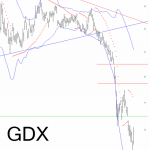The new sales pitch for the high fee active manager goes something like this:
“passive investing has gotten so large that this creates greater opportunities for us to take advantage of these inefficiencies and outperform the market.”
In fairness, this comment is partly true because more passive investors should create the need for more active investors (in the form of market making, index arbitrage opportunities, etc.) but it doesn’t mean traditional active managers will be the beneficiaries. The reason why is simple – as I explained in my new paper, there is no such thing as “alpha” or excess return at the macro level. There is only the post-tax and post-fee return of “the market” portfolio of all financial assets. Within this portfolio, it’s been shown that those who deviate actively from this one true passive portfolio (which is everyone, by the way) have a very (or “very, very” for Trumpian emphasis) difficult time consistently outperforming the market. The arithmetic of active asset allocation is too daunting to overcome consistently.
The annual SPIVA Scorecards have shown that fewer than 20% of active managers generate consistent excess return. And despite the tremendous rise in indexing over the last 20 years, this data has not improved for the high fee active manager. In fact, according to ICI and S&P there is a strong correlation between the rise in indexing and the underperformance of active managers. If anything, the rise of indexing appears to be making it more difficult for traditional active managers to outperform.

So, the data clearly debunks this idea that the rise of passive investing will result in better average performance for high fee active managers.¹ But this recent piece in The New Yorker went even further. It doesn’t just say that investors could be worse off, it says the real economy is worse off as a result of passive investing. Let’s explore some of these claims in more detail.


















Leave A Comment